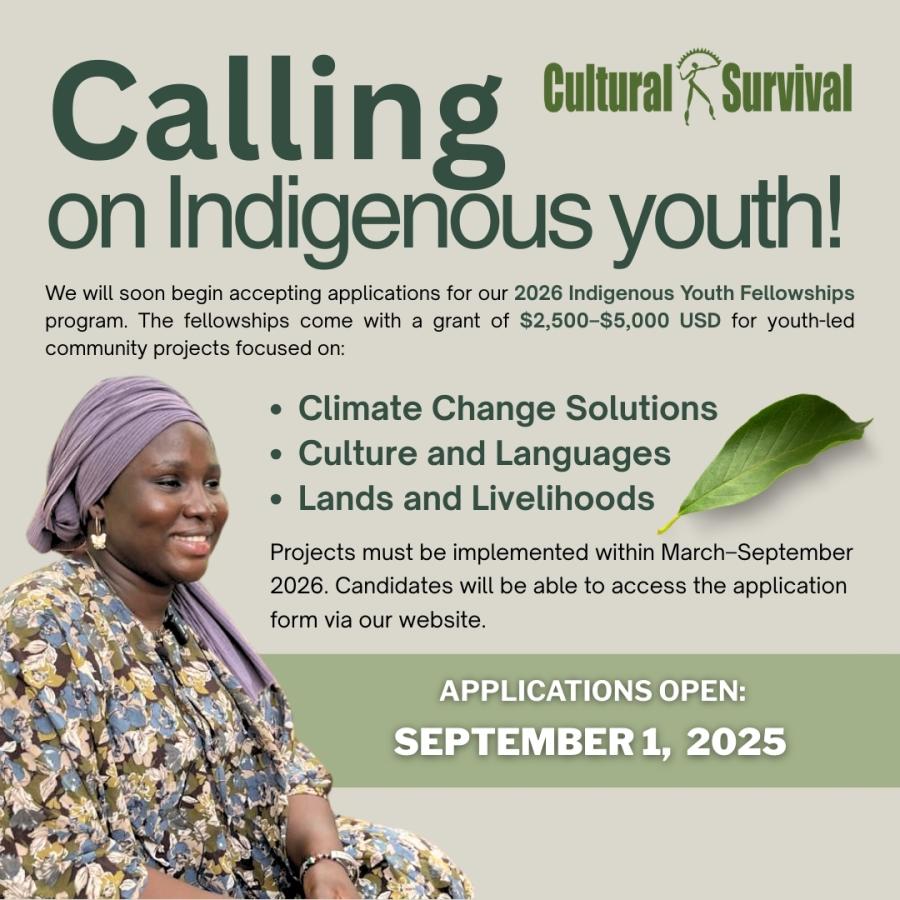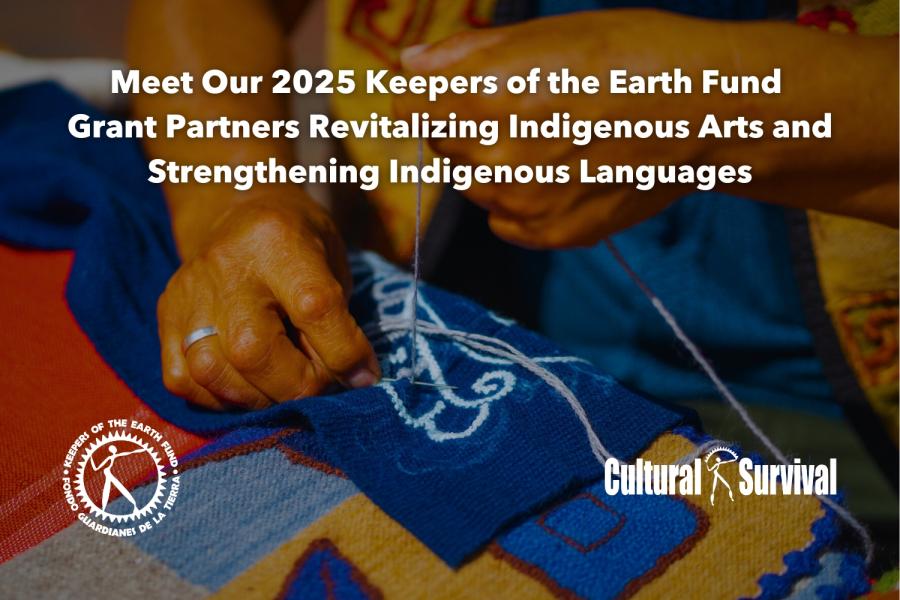Sonny Assu’s “iDrum” art piece on the cover of this issue conveys a poignant, complex, and exciting message for language learning and revitalization. It’s a message of the traditional blended with the contemporary—an artist’s challenge to his own people to “look past the debate of contemporary vs. traditional.” This message introduces this edition of the Quarterly, which focuses on the role of community radio in sustaining and revitalizing Indigenous languages. In an emerging conversation on how the use of media technology can revitalize languages, Cultural Survival
has taken a lead in promoting the role community radio plays in language sustainability.
In July, Cultural Survival collaborated with the Recovering Voices Initiative at the Smithsonian Institution to host “Our Voices on the Air: Reaching New Audiences Through Indigenous Radio,” a conference that brought together Indigenous radio producers from Canada, Columbia, El Salvador, Guatemala, Mexico, New Zealand, Peru, and the United States as well as language scholars and Indigenous leaders to share experiences. We spotlight the work of several conference participants in this issue. New technology and mainstream media in dominant languages have contributed
to Indigenous language loss, but they have also created new tools and opportunities to reach younger generations. “iDrum” and its message reminds me of my family’s journey with our native language. My mother attended a Christian boarding school and experienced brutal repression for speaking her native tongue. Ironically, my grandmother assisted missionaries in translating the Bible into Navajo.
Today, a local Navajo radio station permeates my elderly mother’s home on a daily basis as the preferred station. In Navajo, she hears community information, local and national news, and cultural teachings. “When we listen to radio programs in Navajo, we are engaging something more than just words,” she says. “We feel a sense of home, place, and belonging. We listen to elders speaking who give us guidance. We feel secure and connected to our people.” Traditional ways of socializing are also carried out through community radio programs.
For younger generations, inundated with mainstream media, radio provides a sense of pride and engagement beyond just words. Radio provides a creative space to discuss our contemporary lives and identities as Indigenous people, and makes Indigenous languages relevant. Community radio also plays a significant role in disseminating information about Indigenous rights across rural regions. Radio is also a highly charged political tool for Indigenous people to assert their rights, speak their languages, and educate and organize their communities. Cultural Survival works with Indigenous communitiesin Guatemala to build radio infrastructure and programming capacity throughout many villages, despite government efforts to criminalize community radio. We recently launched a new initiative to produce radio content about the right to Free, Prior and Informed Consent for dissemination around the world. The article “Rights Talk in Belize” describes a community exchange between Guatemala and Belize that seeks to raise awareness and understanding of the right to Free, Prior and Informed Consent.
The challenge ahead of all of us is to support Indigenous communities’ efforts to keep their languages relevant using new and creative ways as they assert their rights to self-determination.
Suzanne Benally, Executive Director
(Navajo and Santa Clara Tewa)



